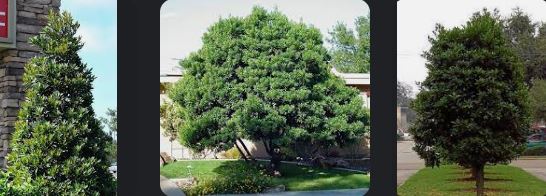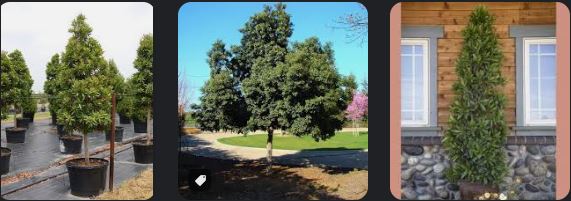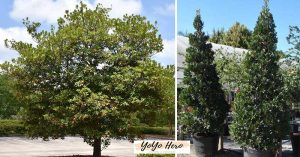The Graceful Japanese Blueberry Tree: An In-depth Examination. The Art of Gardening: A Deep Dive into the Elaeocarpus Decipiens. Embracing Nature’s Beauty: The Greatest Blueberry Tree Guide
Elaeocarpus Decipiens, or as it’s more commonly known, the Japanese Blueberry Tree, is a plant of unrivaled grace and unique charm. Its appeal is not just in its aesthetic beauty but also its resilience and versatility, which make it a favorite among many gardeners and horticulturists.
Originating from East Asia, the Japanese Blueberry Tree is a specimen of fascinating botanical peculiarity, exhibiting an intriguing blend of ornamental features and adaptability. This tree is a feast for the eyes across seasons, with its lustrous evergreen foliage that transitions from bronzy red to dark green and its spring blossoms that give way to blue-black, olive-like fruit.
The tree’s adaptability is further displayed in its ability to thrive in various kinds of soil and climates. From the humid environments of Florida to the harsher climates of Texas, the Japanese Blueberry Tree stands as a testament to nature’s versatility.
Contents
- Unraveling the Unique Characteristics of the Japanese Blueberry Tree
- Sowing the Seeds of Success: Ideal Growing Conditions for the Japanese Blueberry Tree
- Planting the Seed of Success: Care and Nurturing of the Japanese Blueberry Tree
- Troubleshooting 101: Potential Problems and Solutions for Japanese Blueberry Trees
- Weighing the Options: Pros and Cons of Japanese Blueberry Trees
- In Summary: The Splendor of the Japanese Blueberry Tree
As a seasoned botanic professor, the allure of the Japanese Blueberry Tree is not lost on us. Its unique characteristics and minimal maintenance requirements make it a subject of study and admiration. Over the years, we’ve cultivated, observed, and nurtured these trees, gaining valuable insights into their growth patterns, potential challenges, and overall care. It is this amassed knowledge that we wish to share, providing a comprehensive guide to understanding and growing the Japanese Blueberry Tree successfully.
Embark on this thrilling journey with us as we delve into the unique characteristics, ideal growing conditions, potential problems, and the many benefits of cultivating the Japanese Blueberry Tree. Whether you are a beginner amateur gardener or a seasoned horticulturist, our guide will provide the essential knowledge and practical tips for a fruitful gardening experience.
In the following eight sections, we will explore the world of the Japanese Blueberry Tree and illuminate the path to a successful and rewarding cultivation experience.
Unraveling the Unique Characteristics of the Japanese Blueberry Tree
The Japanese Blueberry Tree is a mesmerizing spectacle of nature that stands out in any landscape. Its unique features, growth patterns, and appearance testify to nature’s incredible variety and creativity.
The tree’s growth pattern is quite distinctive. A full-grown Japanese Blueberry Tree stands tall and proud, typically maturing at between twenty and thirty-five feet in height, with an equal canopy width. It has a dense, columnar to pyramidal form that provides ample shade and visual appeal.
Even in its earlier stages, the tree is beautiful. A Dwarf Japanese Blueberry Tree is a smaller version of a full-grown tree with the same charm and beauty. These trees are often used as ornamental shrubs or hedges, adding elegance to any garden.
However, the magic of the Japanese Blueberry Tree lies not just in its form but also in its foliage. The glossy, leathery leaves emerge as a bronzy-red color, gradually transitioning to a vibrant dark green as they mature. This color transition spectacle adds a dynamic visual element to any landscape.
The tree’s appeal extends beyond its physical features. It has deep roots in Asian history and culture. In Japan, its fruit was traditionally used in medicinal preparations, and the tree itself was often planted in temple gardens, contributing to the serene and peaceful environment.
The following table compares the Japanese Blueberry Tree with other familiar trees, highlighting the key features and differences that make it an exceptional choice for gardeners and horticulturists.
| Features | Japanese Blueberry Tree | Common Trees |
|---|---|---|
| Growth Pattern | Dense, columnar to pyramidal | Varies |
| Height | 20-35 feet (Full-grown) | Varies |
| Leaf Color | Bronzy-red to dark green | Varies |
| Fruit | Blue-black, olive-like | Varies |
| Maintenance | Low | Varies |
| Climate | Adaptable (Thrives in climates like Florida) | Varies |
In the upcoming sections, we delve deeper into the cultivation requirements of the Japanese Blueberry Tree, providing insight into how this stunning specimen can thrive in your garden.
Sowing the Seeds of Success: Ideal Growing Conditions for the Japanese Blueberry Tree
The Japanese Blueberry Tree is a versatile specimen, capable of thriving in various climates and conditions. This adaptability makes it an excellent addition to diverse landscapes, from the warm expanses of Texas to the arid climate of Arizona and even the humid environment of Central Florida.
The tree prefers well-drained soil that’s slightly acidic to neutral pH. The soil should be nice and very rich in organic matter. It easily can be achieved by adding a layer of compost or well-rotted manure at planting time. It enhances the soil structure and provides nutrients that support the tree’s growth and vitality.
As for light, the Japanese Blueberry Tree is quite flexible. It can grow in full bright sun to partial shade, although the color and density of its foliage are best when the tree receives at least four full hours of direct sunlight each day.
When it comes to water, the tree requires a moderate amount, especially during the first few years after planting. Regular watering encourages deep root development, enabling the tree to withstand drought conditions as it matures. However, overwatering should be avoided as it can lead to root rot.
The Japanese Blueberry Tree can tolerate a range of conditions in terms of temperature. It is hardy and can withstand short cold periods but thrives in warmer climates. The tree does particularly well in USDA hardiness zones 8 to 11, which include regions like Texas, Arizona, and Central Florida.
The following table makes a comparison of these optimal growing conditions across the different regions:
| Region | Soil | Light | Water | Temperature |
|---|---|---|---|---|
| Texas | Well-drained, slightly acidic | Full sun to partial shade | Moderate | Warm |
| Arizona | Well-drained, slightly acidic | Full sun | Moderate | Warm to hot |
| Central Florida | Well-drained, somewhat sour | Full sun to partial shade | Moderate, increased in high heat | Warm to hot, humid |
Understanding these simple things is the first step to cultivating a Japanese Blueberry Tree in your garden. In the following sections, we’ll explore more specific care and maintenance tips to ensure your tree survives and thrives.
Planting the Seed of Success: Care and Nurturing of the Japanese Blueberry Tree
Planting and caring for a Japanese Blueberry Tree is a rewarding endeavor that usually requires a well-thought-out plan and diligent maintenance. Follow this comprehensive guide to ensure your tree survives and flourishes in its new environment.
Step 1: Select the Right Size
Japanese Blueberry Trees come in various sizes, including 30-gallon and 15-gallon options. The right choice depends on your own specific needs and the free space available in your garden. A 15-gallon tree is perfect for smaller spaces or for those who prefer a younger tree to watch grow. Conversely, a 30-gallon tree provides instant gratification, immediately offering a substantial, mature presence in your landscape.
Step 2: Choose the Planting Site
Select a site with well-drained soil and ample sunlight. While the tree can tolerate partial shade, it thrives when exposed to at least four hours of direct sunlight daily. Remember, the tree can grow quite tall, so make sure there’s enough vertical space to spread its branches.
Step 3: Planting Your Japanese Blueberry Tree
Dig a pretty hole twice as wide and deep as the tree’s root ball when planting. It allows the gentle roots to spread out and establish themselves in their new home. Carefully place the tree in the hole, ensuring that the top itself of the root ball is equal level with the surrounding ground. Backfill the hole with moist soil, press down firmly, and water thoroughly.
Step 4: Watering and Fertilizing
Proper watering and fertilizing are essential for the health and growth of your Japanese Blueberry Tree. Water the tree regularly during the first few years to encourage profound root growth. As the tree matures, it will require less frequent watering but does increase the amount during extremely hot periods.
Fertilizing is another vital aspect of Japanese Blueberry Tree care. Use a slow-release, good granular fertilizer with a balanced NPK ratio. The best fertilizer for the beloved Japanese Blueberry Tree is one that also contains micronutrients like iron and magnesium to promote vibrant, healthy foliage.
Step 5: Pest Control
Fortunately, Japanese Blueberry Trees are relatively pest-resistant. However, regular inspections for common tree pests like aphids and scales can help catch any potential infestations early. If pests are detected, use an appropriate insecticide or enlist the help of a professional arborist.
Remember, nurturing a Japanese Blueberry Tree is a journey, not a destination. Regular care and attention will ensure your tree remains a beautiful and healthy addition to your garden for many years.
Next, we will discuss your potential challenges in this journey and how to overcome them.
Troubleshooting 101: Potential Problems and Solutions for Japanese Blueberry Trees
The journey to maintaining a thriving Japanese Blueberry Tree can be challenging. It may encounter several problems along the way. This section will address these potential issues and provide practical solutions to ensure your tree remains healthy and beautiful.
Problem 1: Red Leaves
One common issue you may encounter is your Japanese Blueberry Tree leaves turning red. While it’s normal for the tree’s leaves to exhibit red hues in colder months, an early or intense red could indicate a nutrient deficiency, particularly a lack of iron or magnesium.
Solution: Apply a slow-release fertilizer specifically designed for trees and shrubs. To alleviate this deficiency, it should contain the necessary micronutrients, including iron and magnesium.
Problem 2: Invasive Roots
Another potential issue is the Japanese Blueberry Tree roots becoming invasive. While the tree’s roots are not typically problematic, they can become invasive if planted in areas with restricted space or near structures.
Solution: The best way to prevent this issue is through strategic planting. Make sure to kindly plant your tree in a location with plenty of space for root growth, and keep it away from foundations, pipes, and other structures.
Problem 3: Pest Infestation
While the Japanese Blueberry Tree is generally pest-resistant, it can still fall victim to common tree pests like aphids and scales.
Solution: Regular inspections and appropriate insecticides can help manage potential infestations. If the problem continues to persist, consider seeking help from a professional arborist.
Problem 4: Fungal Diseases
Fungal diseases like root rot can also affect the Japanese Blueberry Tree. These diseases often result from overwatering or poor drainage.
Solution: Ensure your tree is planted in well-draining soil, and be careful not to overwater. If the tree is already affected, you may need to apply a fungicide or consult with a professional.
Here is a handy table summarizing these common issues and their solutions:
| Potential Problems | Solutions |
|---|---|
| Red Leaves | Apply slow-release, micronutrient-rich fertilizer |
| Invasive Roots | Plant in a spacious location, away from structures |
| Pest Infestation | Regular inspections and use of appropriate insecticide |
| Fungal Diseases | Ensure proper drainage and careful watering; use of fungicide |
By staying vigilant and addressing these issues promptly, you can ensure that your Japanese Blueberry Tree remains a stunning focal point in your garden for years. Now we delve into the myriad uses of this versatile tree.
Weighing the Options: Pros and Cons of Japanese Blueberry Trees
If you’re considering adding a Japanese Blueberry Tree to your landscape, it’s crucial to fully understand the benefits and potential challenges of this particular species. Now we’ll give you an in-depth analysis of the Japanese Blueberry Tree’s pros and cons to help you make an informed decision.
Pros of the Japanese Blueberry Tree
- Versatility: One of the critical advantages of the Japanese Blueberry Tree is its versatility. It thrives in various climates and soil conditions, making it suitable for many environments.
- Aesthetics: This tree offers year-round beauty with its lush green leaves, spring blossoms, and bright blue berries. In colder months, the leaves can turn to an attractive reddish hue, adding a splash of color to the winter landscape.
- Low Maintenance: Once established, the Japanese Blueberry Tree requires minimal care. It’s also generally resistant to pests and diseases, reducing the need for constant monitoring and treatment.
- Privacy and Shade: With its dense canopy, the Japanese Blueberry Tree can provide excellent privacy and shade, enhancing the comfort and enjoyment of your outdoor spaces.
Cons of the Japanese Blueberry Tree
- Potential for Mess: One common concern is, are Japanese Blueberry Trees messy? The answer is they can be. The tree sheds leaves and berries, which may require regular clean-up, especially if planted near a patio or walkway.
- Root System: While not typically an issue, the Japanese Blueberry Tree roots can be invasive in certain conditions, mainly if planted in a restricted space or close to buildings.
- Slow Growth: Although this can be a pro for those looking for a manageable size, those desiring quick shade or privacy might view the tree’s slow growth rate as a con.
Here is the summary table of the pros and cons for your quick reference:
| Pros | Cons |
|---|---|
| Versatility | Potential for Mess |
| Aesthetic Appeal | Root System |
| Low Maintenance | Slow Growth |
| Provides Privacy and Shade |
Ultimately, choosing to plant a Japanese Blueberry Tree will depend on your personal specific needs, preferences, and conditions. While there are potential challenges to consider, this tree’s unique beauty and versatility make it a worthy addition to many landscapes.
The Art of Care: Pruning and Maintenance of the Japanese Blueberry Tree
Even though the Japanese Blueberry Tree is known for its low-maintenance nature, periodic pruning and consistent maintenance practices significantly affect the tree’s health and appearance. Now, we will give yo a guide on how to prune a beautiful Japanese Blueberry Tree and share tips on maintaining its health and aesthetic appeal.
Pruning the Japanese Blueberry Tree
Pruning is a critical practice that helps control the tree’s size, maintain its shape, and promote healthy growth. Here’s a step-by-step complehensible guide on how to trim a Japanese Blueberry Tree:
- Prepare Your Tools: Start by gathering sharp, clean pruning shears. Disinfecting your tools before use can help prevent the spread of diseases.
- Time Your Pruning: The best and finest time to prune is during late cold winter or early spring when the tree is dormant. It is also when you can easily see the tree’s structure.
- Identify What to Prune: Begin by removing dead, diseased, or damaged branches. It helps prevent the spread of some diseases and enhances the tree’s overall health.
- Shape the Tree: After removing unhealthy branches, maintain the tree’s natural shape. Remove any branches that disrupt its balance.
- Thinning: Remove some inner branches to promote better airflow and light penetration. It discourages pest infestation and promotes healthier growth.
- Clean Up: Collect and dispose of the trimmed branches properly to prevent any potential spread of disease.
Maintaining the Health and Shiny Appearance of Your Tree
Aside from pruning, supporting the Japanese Blueberry Tree involves a few other vital practices:
- Watering: Regular watering is essential, especially during dry periods. However, don’t overwater, as this could lead to root rot.
- Mulching: Apply a layer of nice organic mulch around the tree’s base to help conserve soil moisture and suppress weed growth.
- Fertilizing: An annual application of a slow-release, balanced fertilizer can help promote healthy growth. Remember to water the tree well after fertilizing.
- Pest and Disease Control: Regularly inspect your tree for signs of pests or disease. Early detection can make treatment more effective.
- Leaf Drop: Don’t be alarmed if your tree sheds some leaves, especially during extreme temperature changes. It is a normal part of its growth cycle.
By adopting these practices, you can ensure that your Japanese Blueberry Tree remains a beautiful and lovely addition to your landscape for years to come.
Purchasing Power: Commercial Availability of the Japanese Blueberry Tree
If you want to easily enhance your landscape with the stunning Japanese Blueberry Tree, rest assured that acquiring one is generally straightforward. With the proliferation of online nurseries and local garden centers, you can easily find a Japanese Blueberry Tree for sale. However, it’s essential to consider several factors when purchasing, including the size of the tree, its health, and your location.
Where to Buy a Japanese Blueberry Tree
Purchasing a Japanese Blueberry Tree has always been challenging, thanks to the numerous online and physical outlets. Here are some options:
- Local Garden Centers: The quickest way to get a Japanese Blueberry Tree is by visiting a local garden center. This option provides the advantage of visually inspecting the tree before buying.
- Online Nurseries: Many reputable online nurseries offer a wide selection of Japanese Blueberry Trees. This option allows you to compare prices and reviews from the comfort of your home.
When searching online, use search terms like “Japanese Blueberry Tree for sale near me” to find local sellers or nurseries that deliver to your area.
Japanese Blueberry Tree Price
The price of a Japanese Blueberry Tree varies based on size, age, and overall health. Typically, a 15-gallon Japanese Blueberry Tree might cost between $100-$150, while a giant 30-gallon tree could range from $200-$300.
While purchasing a more extensive tree may provide instant gratification, younger, smaller trees often adapt better to transplantation and may lead to long-term success.
Shipping Details and Restrictions
While many online nurseries ship nationwide, restrictions may apply due to state agricultural regulations. For instance, you may encounter a joint limitation: “does not ship to AZ.” Arizona and several other states have stringent rules to protect local agriculture from potential pests or diseases that may come with imported plants.
Before purchasing, be sure to check the shipping details and restrictions of the nursery. It ensures that you can receive your Japanese Blueberry Tree without any issues.
Remember, owning a Japanese Blueberry Tree is not just about purchasing one. It’s about nurturing it to full bloom, an undoubtedly rewarding journey. As you embark on this journey, we’re here to guide you.
In Summary: The Splendor of the Japanese Blueberry Tree
We have traversed the journey of the captivating Japanese Blueberry Tree, unveiling its botanical charm, extraordinary resilience, and striking aesthetic appeal it brings to landscapes. With its wonderful ability to transform ordinary spaces into exceptional spectacles of beauty, it’s no wonder this tree is a favored choice among gardening enthusiasts and landscape artists alike.
Embracing the Japanese Blueberry Tree in your garden is not merely about adding a plant; it’s about inviting a piece of art, a symbol of strength and endurance that will inspire for years to come. We encourage you to consider this magnificent tree as a part of your landscape, a choice that we believe you will not regret.
Your experience and insights matter to us. Have you had the pleasure of growing a Japanese Blueberry Tree? Do you have any questions about their care or maintenance? We invite you to share below in the comments or HERE! your experiences and queries.
We look forward to happily engaging with you on this journey of botanical exploration.
Recommended Reading
For further reading on Japanese Blueberry Trees and general gardening, consider the following books available on Amazon:
- “The Pruning Book” by Lee Reich. Amazon link.
- “The Tree Book: Superior Selections for Landscapes, Streetscapes, and Gardens” by Michael A. Dirr and Keith S. Warren. Amazon Link.
- “Manual of Woody Landscape Plants”. A book by Michael A. Dirr. Amazon Link.

Margarita Alexieva is a highly respected figure in the realm of journalism. Her diverse background spans numerous newspapers and magazines, where she’s crafted a multitude of pieces ranging from investigative journalism to enlightening editorials. Not only confined to print media, Margarita’s media experience also encompasses regional television stations, where her powerful storytelling abilities have resonated with a wide audience. As a dedicated journalist, Margarita’s work consistently reflects her commitment to accuracy, fairness, and an unwavering dedication to shedding light on vital issues. Her significant contributions to the media landscape continue to inform, inspire, and engage readers and viewers alike.

I’ve had a Japanese Blueberry Tree for five years now, and it’s the star of my garden. Its resilience is impressive; it survived several harsh winters without significant issues.
We are planting Japanese Blueberry Trees this week in the Houston area. We have experienced some harsh winters, so it is good to hear yours survived. Can you share your location?
I’d like to add that the tree’s non-invasive roots are a significant plus. I’ve planted mine close to my house without any problems, something I can’t say for many other tree species.
One thing to remember is the tree’s love for well-draining soil. I lost my first tree to waterlogging, so ensure your garden has proper drainage.